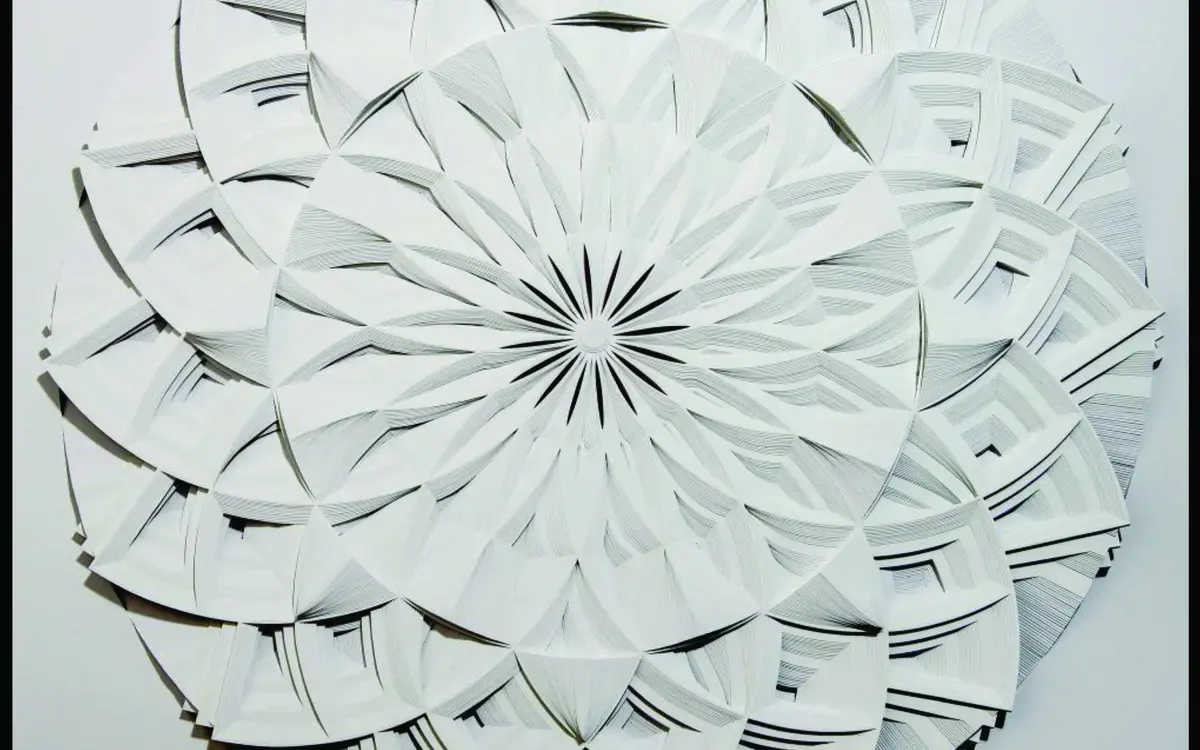At Peace With Death

In my first term at Bennington, my mother died. I didn’t know it then but that was the beginning of my spiritual journey.
After she died, I tried to understand what happens to us and started to research. I wanted to know where my mother went. I consulted friends who were into the occult, tarot cards, and astrology. I started and then stopped reading The Tibetan Book of the Dead. It was over my head. The ultimate question, I continued to ask.
During my senior year at Bennington, I had a dream of a symbol I had never encountered before spinning above my head. It was a powerful symbol and one that I drew as soon as I woke up. I incorporated it into my artwork. I asked everyone about it. These were the days before Google, so that is what you did. And back then no one knew what it was, including me.
A decade after I graduated, I found myself in a Buddhist temple. There it was! The symbol I dreamt more than 10 years earlier was the Dharma Wheel. It is meant to remind us that the Buddha’s teachings are always moving, traveling around the world, never belonging to one country or people but moving according to karma. It felt like I had come home. I dove into everything dharma, studying and meditating, going to courses, traveling around the world for teachings. It was magical.
After all of these years, searching and questioning, I have come to peace with death. Most importantly I learned about death, what happens when we die and how to benefit those that are dying. Buddha taught that death is a permanent separation of mind and body. Every night when we sleep we have a temporary separation, our mind goes to the dream world while our body just lies on the bed. In the morning we reconnect, but when we die our mind goes to our next life and our body of this life is buried or cremated.
In our modern society we are often afraid to look at death or contemplate it, but death is so important to prepare for and to learn from. People spend so much energy on their bodies, making them healthier, thinner, stronger, but not as much energy on their minds. If you think about it, life is nothing but thoughts, and our thoughts come from the mind. Our thoughts are an internal path leading us somewhere. To the next thought, the next idea, the next life. Everything is created with thought—emotions, designs, theories. Where thoughts lead us is the most important thing, it’s our inner path leading to freedom or suffering. I never thought it would be possible to consider my mother’s death a gift, but it was.
Last June my father died. It was an amazing experience to go through it with him. I didn’t stand there helpless at the side of the bed like I did with my mother. I truly feel I helped him to transition to his next life. It gave him peace and it brought me healing.
Kelsang Chenma (Linda Uram ’87) has been a Buddhist nun in the New Kadampa Tradition for the last 15 years. She lives at the Kadampa World Peace Temple in Glen Spey, NY.